
AC Club Sessions
All players are welcome. Experienced players are paired with less experienced ones to ensure a good game for all.
In club sessions, we play: Alternate Stroke Doubles with a random draw for who plays whom, balanced to accommodate high and low handicapped players.
Play is split into two 1¼ hour sessions with different pairings in each session and a tea interval in the middle.
Sessions
There are two sessions of 75 minutes with a tea break between:
- Session 1:
- Arrival: by 13:50
- Draw: 13:55
- Start play: 14:00
- End immediately when the bell rings at 15:15
- Tea: 15:15-15:45 - Tea, coffee and biscuits are free of charge – players are encouraged to gather around the table
- Session 2:
- Arrival: by 15:35
- Draw: 15:40
- Start play: 15:45
- End immediately when the bell rings at 17:00
- Players must be in the clubhouse to take part in the draw 5 minutes before play starts
- Members are welcome to attend one or both sessions
- To be included in the draw, players must arrive 10 minutes before the play start time
- Latecomers might not be able to play in that session
The Draw
- Random draw for pairings except:
- Very low handicap players should be paired with higher handicapped players to minimise bisques
- Beginners are paired with an experienced player to foster learning
Play
- 14-point Handicap Alternate Stroke Doubles - base 8
- Stop playing immediately when the bell rings after 1¼ hours
- If there are three people in a game, a doubles pair using alternate strokes competes against a singles player
- If two players are left over, they can play short croquet or, if space is available, 14-point base 8
- Play with due dispatch and avoid prolonged discussion in doubles when it's your turn
- Avoid interfering in others' games (unless asked)
- Club sessions are for playing, not for coaching:
- Advice on tactics, bisque use, shot selection and technique, etc. should only be given if requested
- Anyone may ask for feedback, which should be given off-lawn and be constructive and appropriate
- Anything beyond brief advice or demonstration should be covered in a separate coaching session
- These games are not entered on your card so are ideal opportunities to practise your shots and tactics without a handicap penalty for failure
- Take a chance - you might pull it off!
Bisques
Both sides have bisques, calculated as follows:
- Add together the pair's handicaps and divide by two (don't round)
- If a single player, just use their handicap
- If both sides (pairs) are more than 8 (the base):
- Subtract 8
- Look up on the Schedule of Bisques - copy posted near the bisques
- Find the number in the 26-pt column and read-across to the 14-pt column
- If one or both sides are less than 8:
- Take the difference between the two halved aggregates and use the chart to convert to 14-pt
- Alternatively, use the online tool
The Session Manager
- The draw should be as random as possible, whilst pairing high-handicap with low-handicap, and ensuring that beginners pair with an experienced player
- Different partners in each session and, if possible, different opponents
- The manager is responsible for organising tea and biscuits
- The manager should ring the bell at the end times
| #Players | Format |
|---|---|
| 2 | Short Croquet or 14-point |
| 3 | 1v2-ASD (Alternate Stroke Doubles) |
| 4 | ASD |
| 5 | 1v2-ASD + Short Croquet or 14-point |
| 6 | Two 1v2-ASD or ASD + Short |
| 7 | ASD + 1v2-ASD |
| 8 | ASD + ASD |
| 9 | Three 1v2-ASD or ASD + 1v2-ASD + Short |
| 10 | ASD + two 1v2-ASD or ASD + ASD + Short |
| 11 | two ASD + one 1v2-ASD |
| 12 | three ASD |
| 13 | One ASD + three ASD 1v2 |
| 14 | Two ASD + two ASD 1v2 |
| 15 | Three ASD + one ASD 1v2 |
| 16 | Four ASD |
In 1v2-ASD, one player plays alone as if singles.
Players can vote on whether they want several sets of three playing doubles or one pair to play singles
Suggested Draw Process
- Coloured tokens that represent pairs of balls are used for a random draw each round to determine who plays with whom and against whom
- Players drawing matching tokens pair up for Alternate Stroke Doubles
- Players should swap tokens if pairs are repeated between sessions
- If there is an odd number of players, one player will draw a token that has no partner, and so they play alone as singles against a pair playing alternate strokes
- To do the draw:
- Count the number of players and decide which tokens you need
- Put them in a bag, and allow each person to draw a token to allocate them to a pair of balls and a lawn
- If beginners are playing, ensure that each plays with a more experienced player by first removing tokens and putting them into a beginners' draw, and the other players draw from the tokens remaining
- If there are low handicapped players, pair them with beginners or high handicappers similarly
- If there is are players who can only play Short Croquet, allocate them a silver token and put the partner tokens in the draw
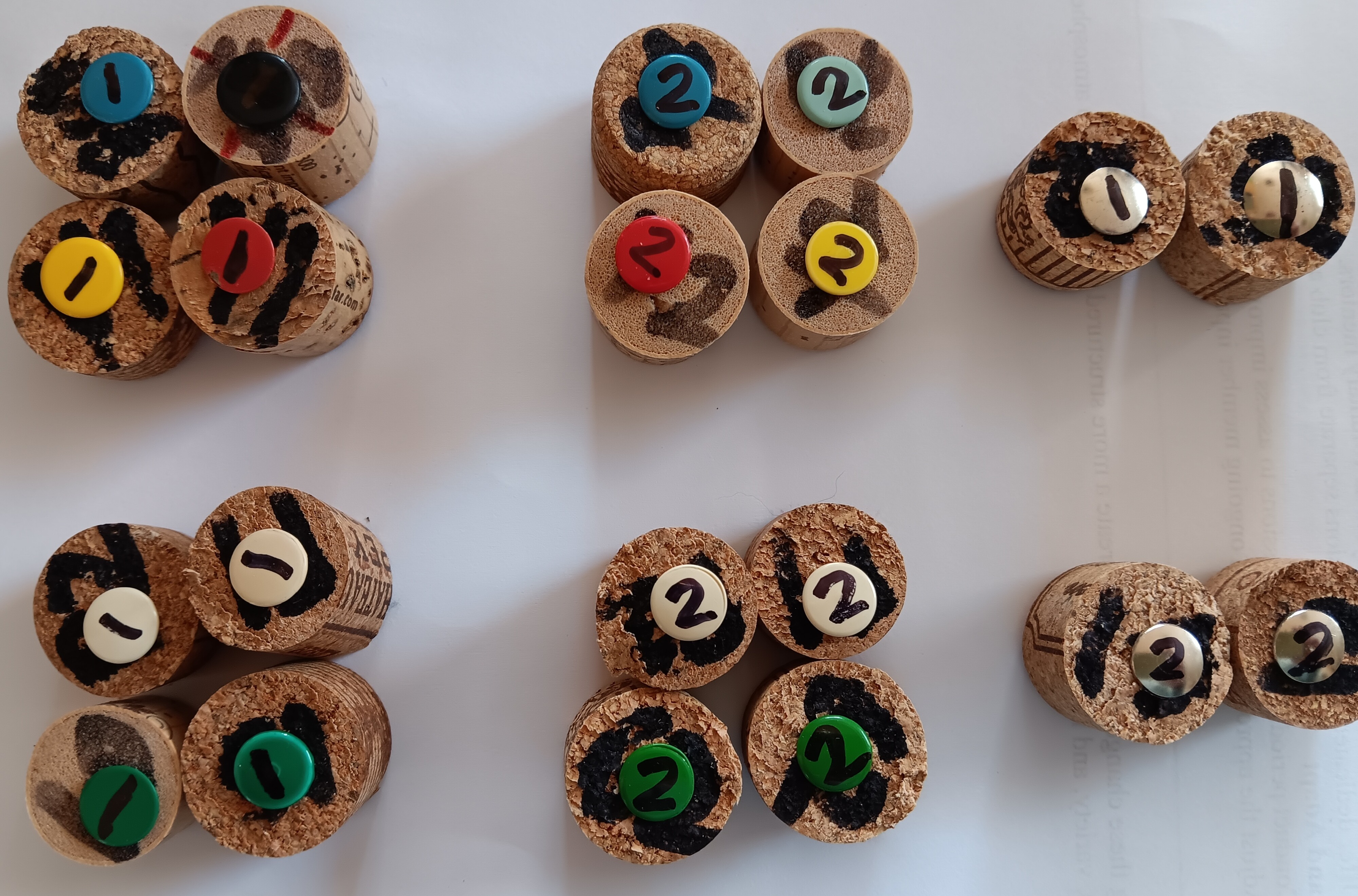 The tokens represent primaries and secondaries on lawns 1 and 2; the silver ones represent the Short Croquet lawns (S for silver and singles).
The tokens represent primaries and secondaries on lawns 1 and 2; the silver ones represent the Short Croquet lawns (S for silver and singles).
Count the number of players, and decide which tokens you need.
Put the tokens in a bag and each person draws one, which allocates them to a pair of balls and a lawn.
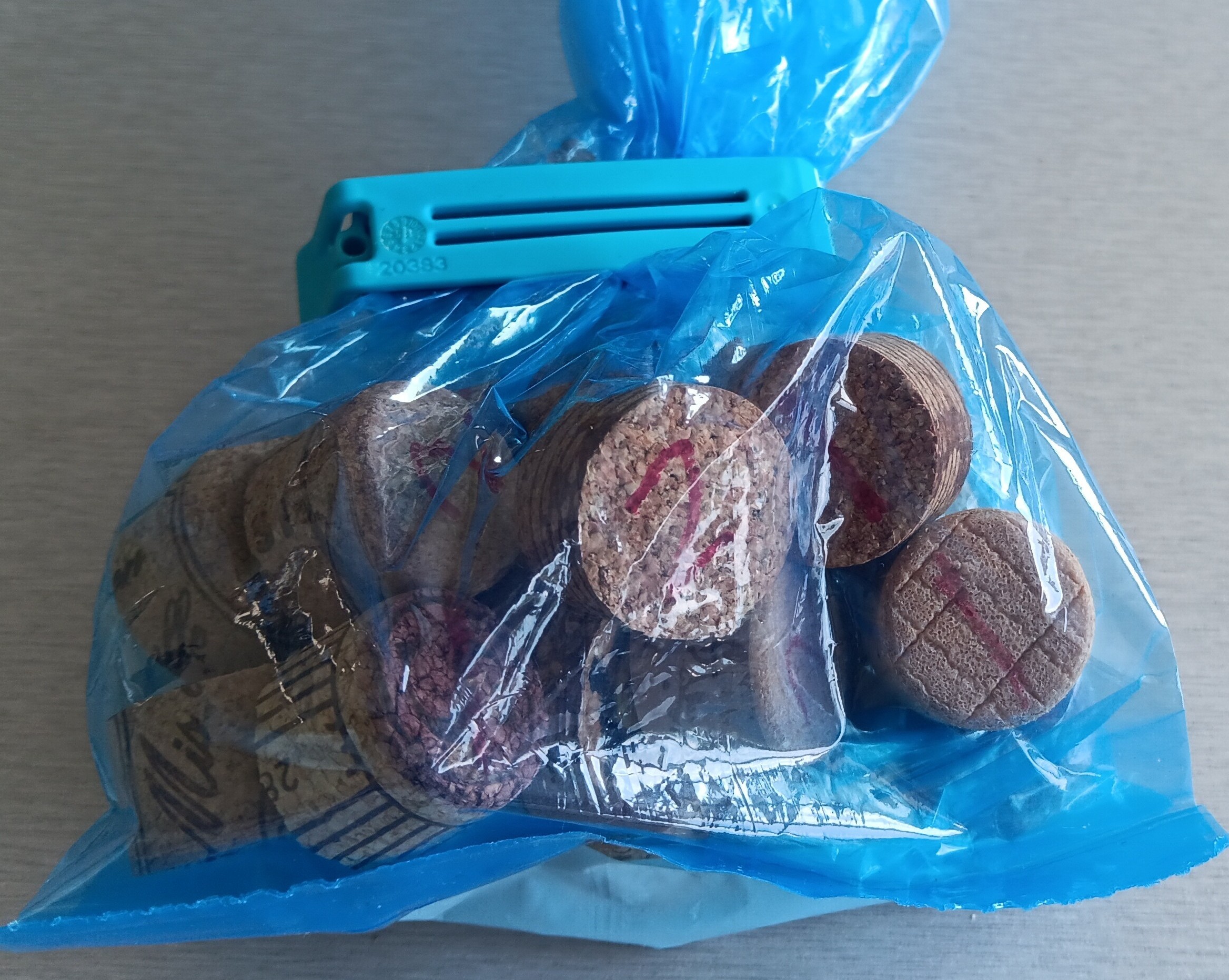 The draw tokens are in a bag stored with the other game support equipment on the shelf in the corridor leading to the lavatories.
The draw tokens are in a bag stored with the other game support equipment on the shelf in the corridor leading to the lavatories.
Make sure the players don't hold on to the token - check you have them all back while they are in play so you know which pair to ask!
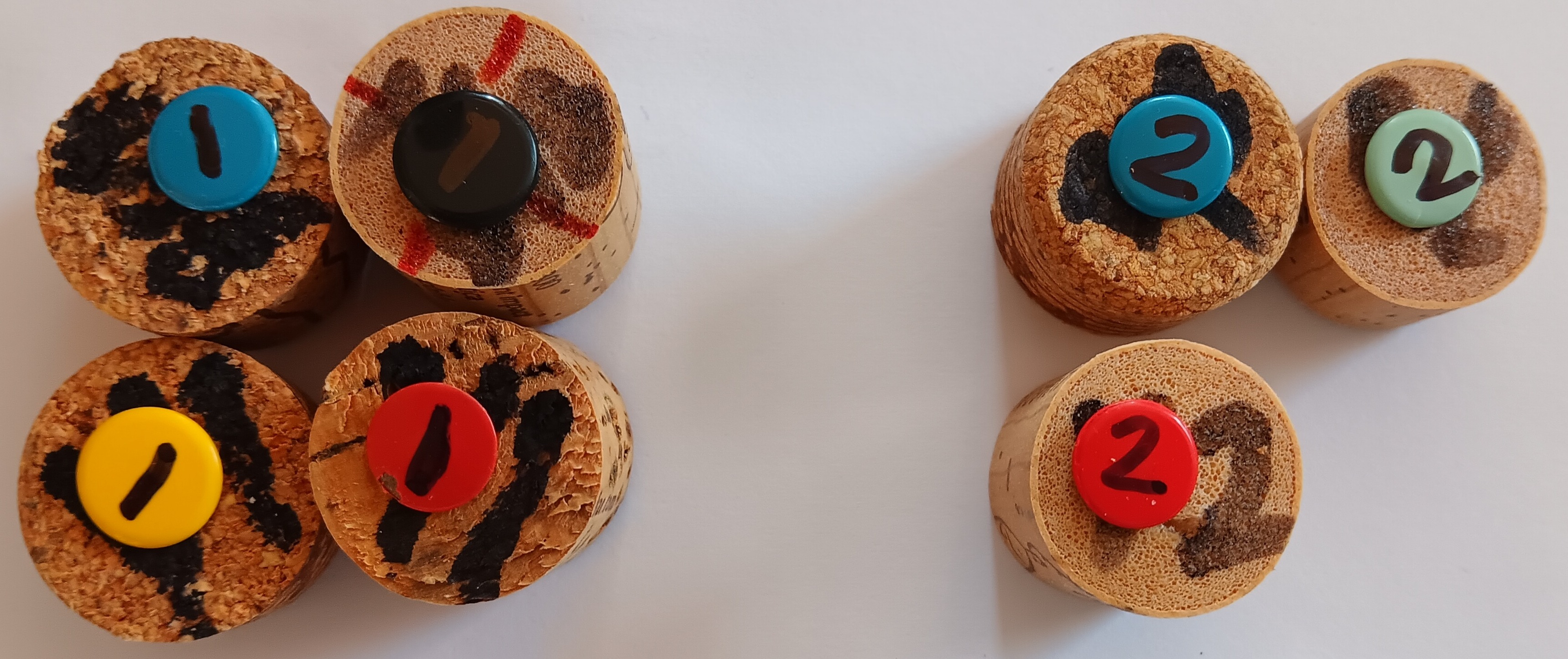 Here there are seven players - the person who draws red#2 plays alone with red and yellow on lawn 2.
Here there are seven players - the person who draws red#2 plays alone with red and yellow on lawn 2.
 If eight people turn up, three of whom are beginners, tokens are removed for the beginners to draw before the other players draw from the remainder. This ensures that the beginners each play with a more experienced player.
If eight people turn up, three of whom are beginners, tokens are removed for the beginners to draw before the other players draw from the remainder. This ensures that the beginners each play with a more experienced player.
If there are very low handicapped players present, pair them with the beginners with a second draw using the beginners' matching tokens (blue#1, yellow#1 and blue#2 in this example).
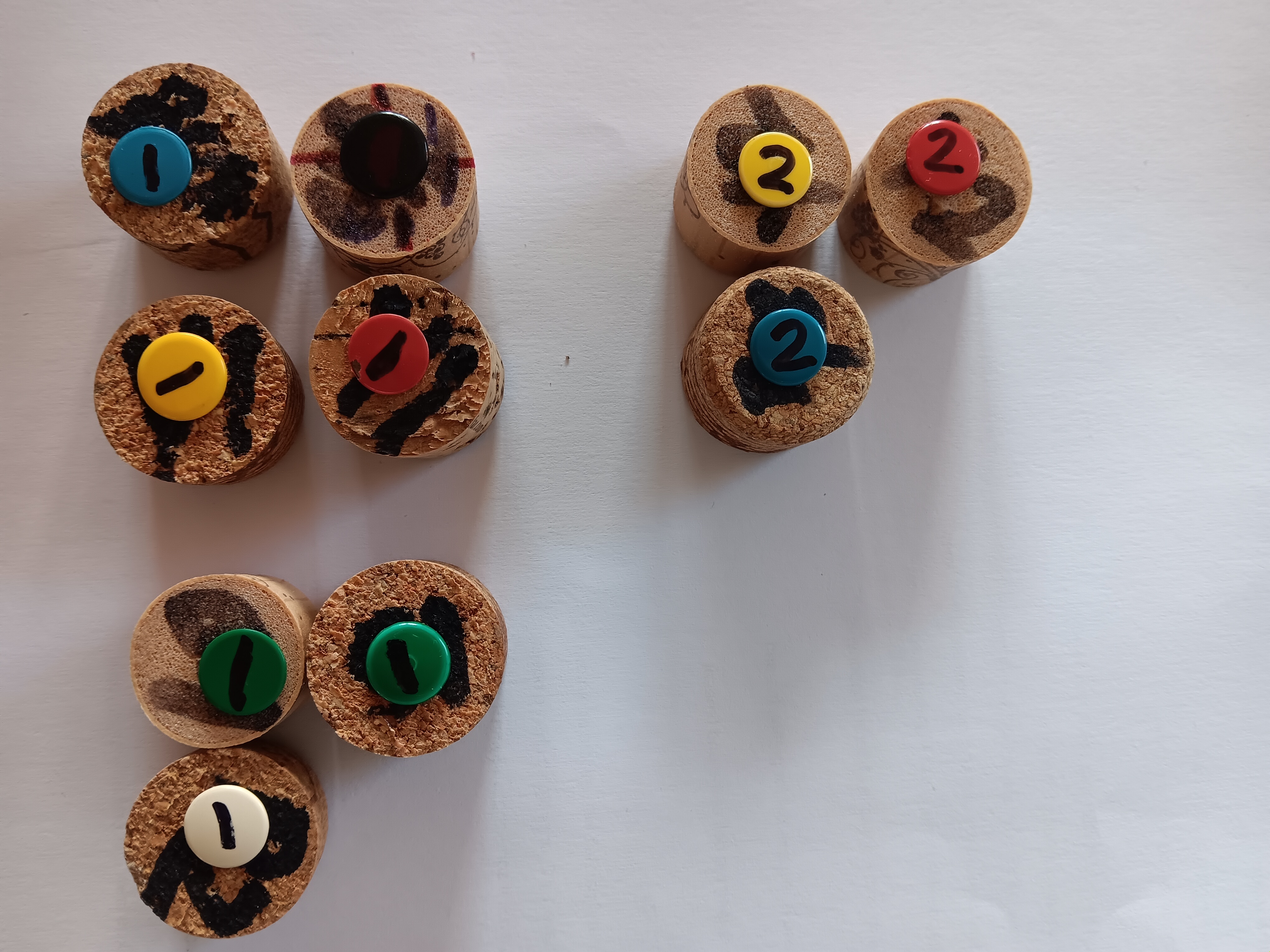 Here there are ten players, so we have primaries on both full lawns and secondaries on one - two groups of three and a four.
Here there are ten players, so we have primaries on both full lawns and secondaries on one - two groups of three and a four.
Whoever draws white#1 and blue#2 play alone with pink and white, and black and blue, respectively.
 An option for ten players: we have primaries on both full lawns and one Short Croquet (or 14-point singles double-banking).
An option for ten players: we have primaries on both full lawns and one Short Croquet (or 14-point singles double-banking).
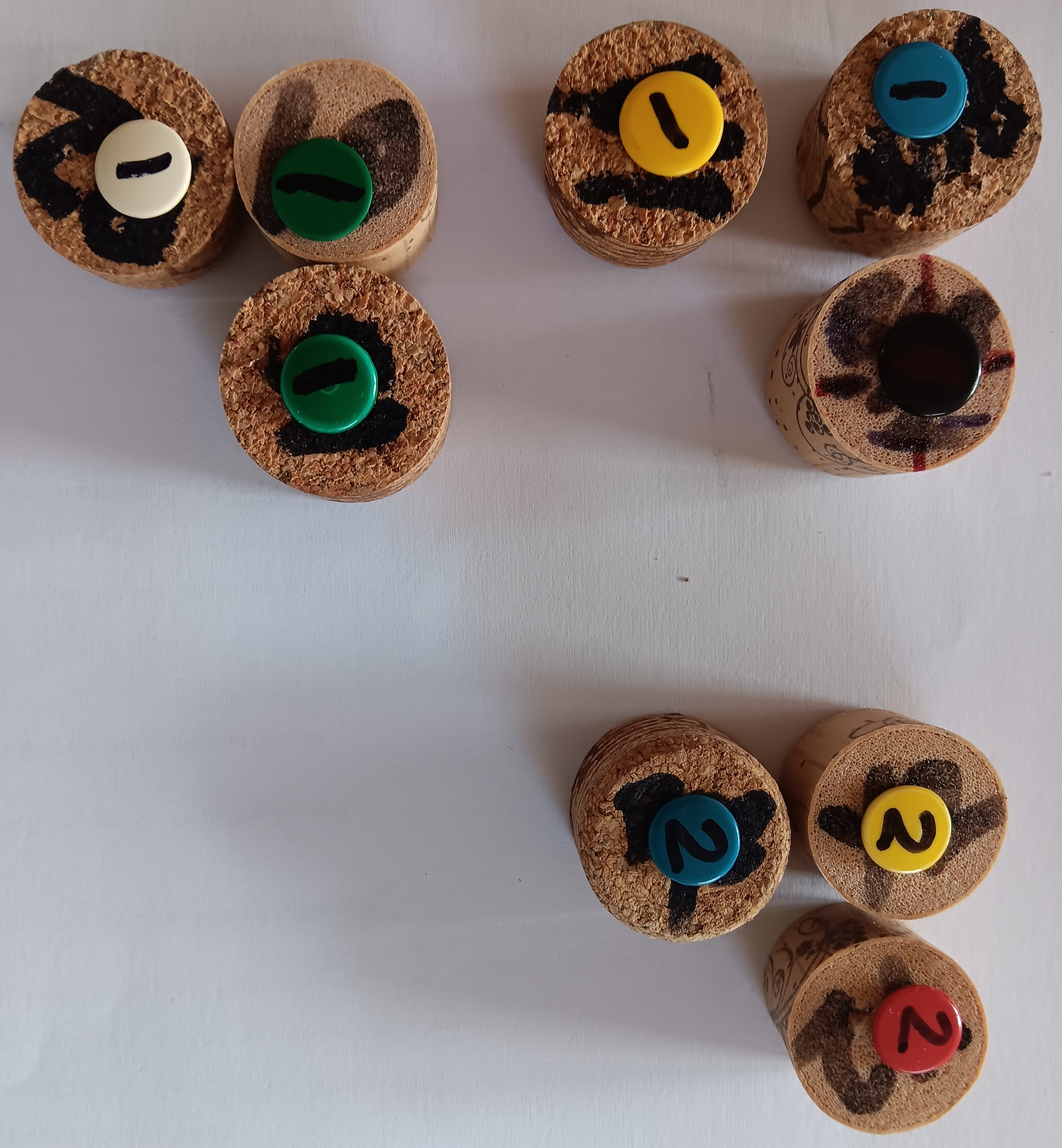 Here there are nine players - the players who draw white#1 and blue#2 play alone with white and pink, and black and blue, respectively.
Here there are nine players - the players who draw white#1 and blue#2 play alone with white and pink, and black and blue, respectively.
 Another option for nine players - the person who draws red#2 plays alone with red and yellow on lawn 2.
Another option for nine players - the person who draws red#2 plays alone with red and yellow on lawn 2.
Those who play singles in the first session should be allocated to a doubles game in the second.


